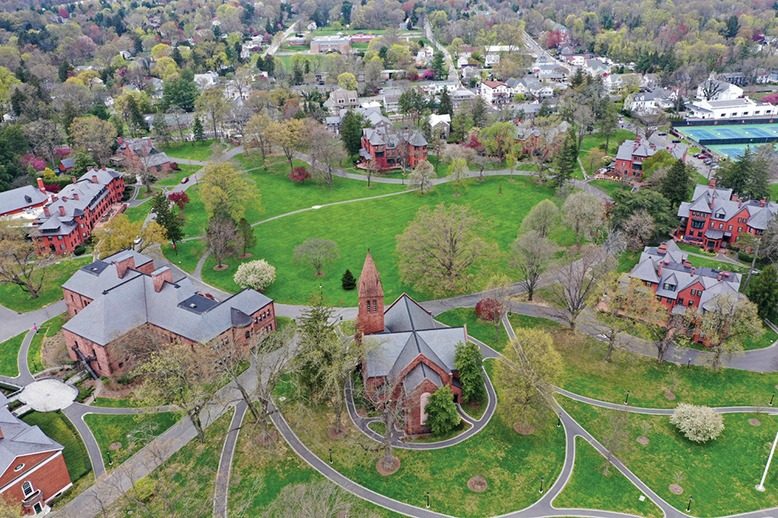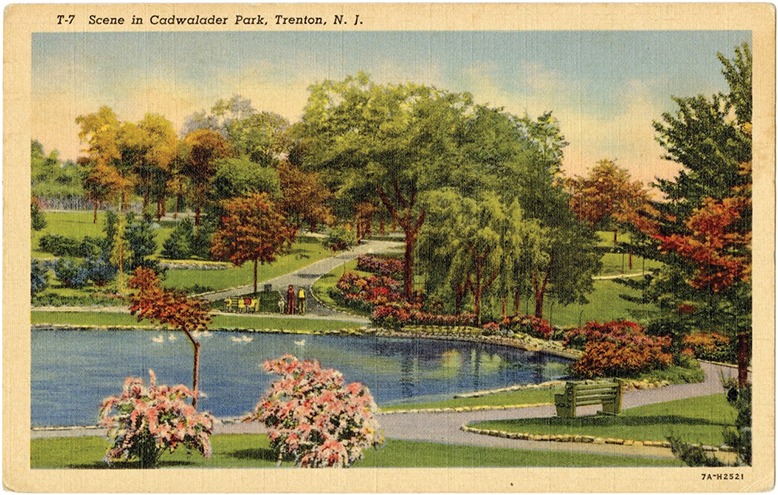
He greened America, yet his name may have faded from memory. While Frederick Law Olmsted, whose 200th birthday is being honored this April, is famous for his creation of Central Park, many people may not know that he also helped design a number of parks and projects here in New Jersey.
Olmsted was once the country’s preeminent landscape architect and was praised as an artist who “paints with lakes and wooded slopes; with lawns and banks and forest-covered hills,” author Elizabeth Stevenson noted in Park Maker: A Life of Frederick Law Olmsted. He still remains an inspiration.
During the height of a busy career, Olmsted (1822–1903) was involved with roughly 18 projects for public and private clients in New Jersey. Many of those commissions no longer survive or were not finalized by 1895, when he retired; a few were later realized by Olmsted Brothers, the firm run by his son and stepson. While working on Central Park in 1867, Olmsted and his partner, Calvert Vaux, were invited to present a plan for a “public park for the city of Newark,” his first important New Jersey project. In the proposal, they proclaimed: “The central idea of a large public park is manifestly that of a work of art.” Olmsted pressed for a more expansive park, recognizing not only the “beauty of natural scenery in the vicinity,” but also its potential financial rewards. “A park of ample dimensions…cannot fail to establish in a few years a great number of taxpaying residents upon its border,” he advocated.
The original report sat dormant for three decades. Inspired by their father’s concept, Olmsted Brothers eventually realized Branch Brook Park—which is now famous for its beautiful cherry blossom trees that bloom each April—and numerous parks in Essex County that established the first county park system in the United States.
In 1880, Olmsted was commissioned to design a modest, 50-acre residential campus for Lawrenceville prep school. Collaborating with the architectural firm Peabody & Stearns, he created a scholastic community that brings to mind a charming New England village. Many of the school’s buildings face an oval common green. He described the school as “a public building in a park.” The plan of the campus included “all species of trees that…can be successfully cultivated in central New Jersey.”

A postcard of Cadwalader Park in Trenton. Photo courtesy of the Lawrenceville School’s Stephan Archives
Cadwalader Park, dating from the early 1890s, is the only civic park in New Jersey designed exclusively by Olmsted. Encompassing 100 acres, it remains relatively intact and has the key signature features of an Olmsted restorative retreat: rolling topography, meandering footpaths, designated carriage drives, irregularly shaped ponds, and a specified playground area. Just east of the parkland, Cadwalader Heights became a desirable residential neighborhood.
Olmsted created an incomparable legacy, as was noted in his New York Times obituary in 1903. “The master of a very grand art” fashioned picturesque landscapes that present the illusion of natural authenticity, patiently awaiting what “the hand of time could bring to completion.”



